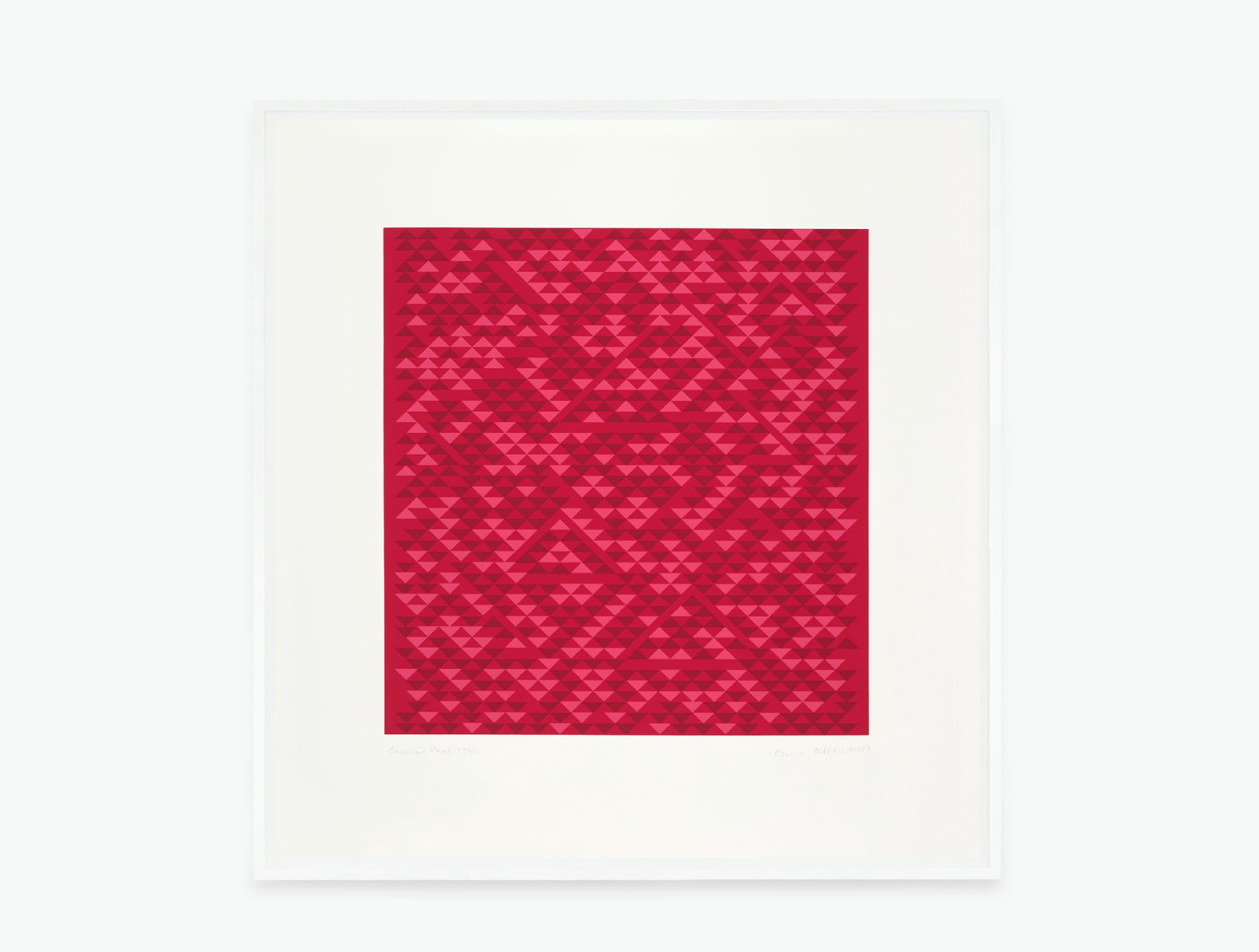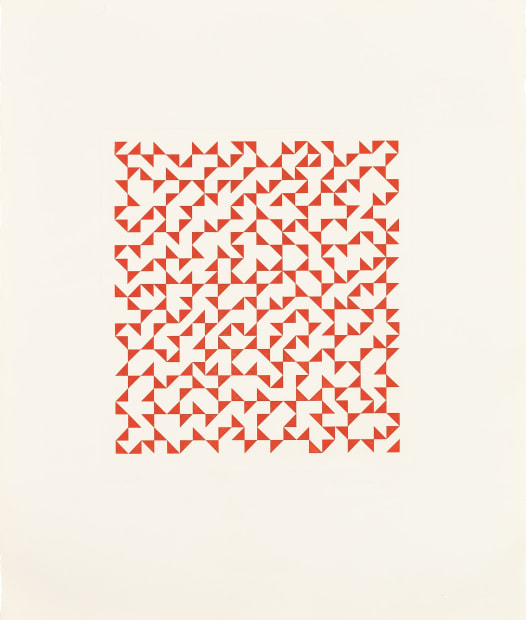-
"For me there is no gap between my painting and my so-called 'decorative' work. I never considered the 'minor arts' to be artistically frustrating; on the contrary, it was an extension of my art."— Sonia Delaunay
Modernity, for Sonia Delaunay, Anni Albers, and Benita Koch-Otte, was never a single breakthrough but a rhythm of repetition—motifs multiplied across fabric, print, and photograph. This rhythm emerged in the dialogue they forged with technology. Delaunay cultivated hand-stenciled pochoirs that echoed the dynamism of Parisian billboards, her arcs and chevrons vibrating like headlights on the boulevard. Albers, arriving in the United States after leaving Germany, found new collaborators in the printmaking studio—tools such as screen-print and etching that could reproduce motifs with mechanical rigor while still capturing her subtle variations in line and hue. Koch-Otte, meanwhile, turned the camera into both microscope and metronome, freezing the loom’s threads into crisp silver halides that revealed structure as pattern in motion. Across their work, the apparatus of reproduction functioned as a partner, refining the balance between intuition and mechanical process.
The reach of these methods was equally significant. Prints and photographs traveled where paintings rarely went: department stores, architectural journals, housing interiors, even through the post. By embracing these channels, Delaunay, Albers, and Koch-Otte moved beyond the traditional exhibition system that often limited women’s careers. Their multiplied images carried abstraction into everyday contexts, striking a balance between refinement and accessibility—objects finely crafted for collectors yet equally resonant in broader cultural settings.
Formally, the three artists explored the threshold between order and flux. Delaunay’s Rhythm-Color lithographs shift from strict concentric scaffolds into optical shimmer, slipping past the eye’s ability to hold them still. Albers’s stacked triangles appear static at first, until subtle shifts in color generate a kinetic pulse. Koch-Otte’s close-focus photographs of woven structures and nature blur at their edges, dissolving the line between material fact and visual effect. In each case, the grid becomes less a rigid framework than a stage for calibrated instabilities—modernity articulated through movement as much as structure.
Taken together, these works propose an expanded map of modern art. Rather than opposing established narratives, Delaunay, Albers, and Koch-Otte reimagined modernism through media often undervalued in their time. They demonstrated that the loom, the textile workshop, and the camera could serve as sites of rigorous artistic inquiry alongside the painter’s studio or architect’s desk. Seen together, their legacies affirm how repetition, material intelligence, and the imaginative use of new technologies shaped the visual language of the twentieth century.
-
-

-

-
-

Anni Albers
Camino Real, 1967-1969Screenprint on Mohawk Superfine Bristol paper
23 1/2 x 22 in (59.7 x 55.9 cm)
Edition of 90, plus 12 AP -

-

-

-
-

Benita Koch-Otte
Water Lily, ca. 1930Gelatin silver print
8 1/4 x 6 in (21 x 15.2 cm)
Modern Women The Art of Sonia Delaunay, Anni Albers, and Benita Koch-Otte
Current viewing_room







